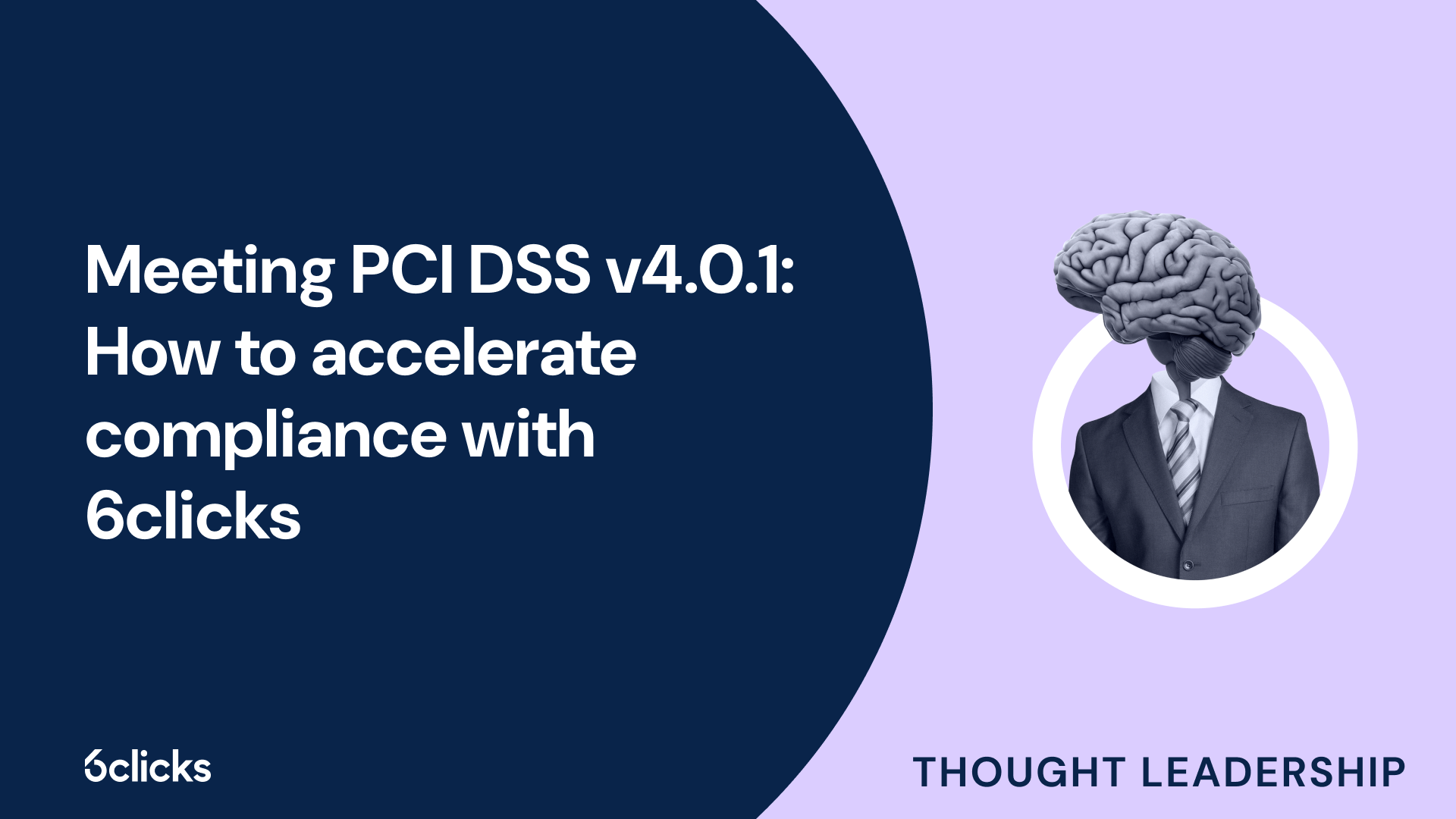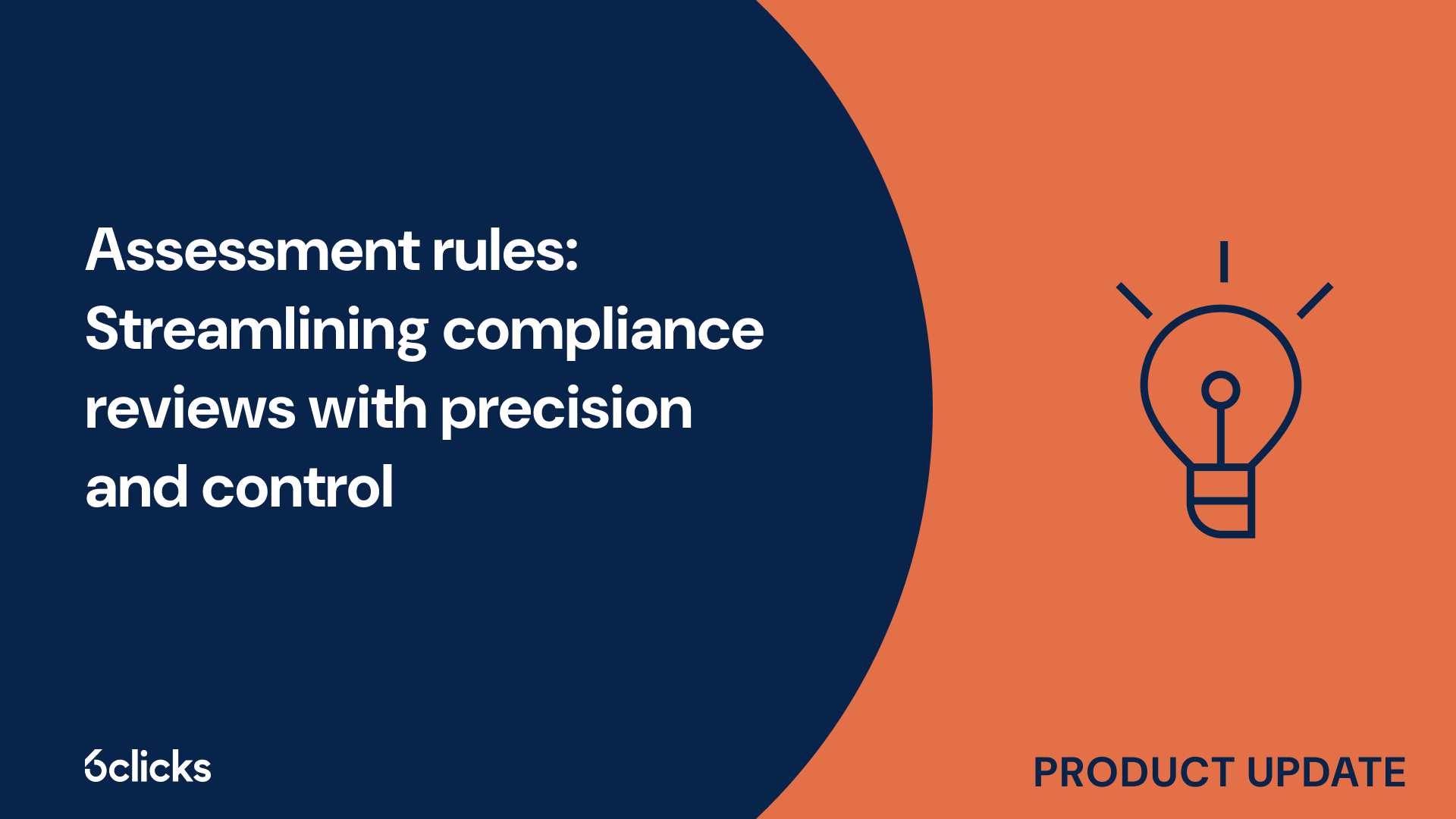Cyber resilience in 2025: Your smart guide to NIST CSF
Boost your organization's cyber resilience with this expert guide to the NIST Cybersecurity Framework. Learn to assess risk, improve security posture, and automate compliance with AI-powered tools.
-1.png?width=200&height=249&name=Group%20193%20(1)-1.png)
Cyber resilience in 2025: Your smart guide to NIST CSF
Overview of NIST 800-171
The National Institute of Standards and Technology (NIST) Special Publication (SP) 800-171 sets forth a comprehensive set of security requirements for non-federal organizations that handle sensitive government information or operate in support of federal agencies. These requirements aim to protect Controlled Unclassified Information (CUI) from unauthorized access, safeguarding it from cybersecurity risks and threats. NIST 800-171 compliance is essential for government contractors, subcontractors, and any organization that deals with federal contracts or subcontracts. By adhering to the security controls outlined in NIST 800-171, organizations can ensure the confidentiality and integrity of CUI, thereby mitigating security risks. Compliance with NIST 800-171 involves implementing stringent security measures across various control families, including access controls, personnel security, physical security, incident response, and more. Organizations striving for NIST 800-171 certification must conduct a thorough self-assessment of their security posture and implement any necessary improvements to align with the requirements. Achieving and maintaining NIST 800-171 compliance is crucial for organizations to remain eligible for federal contracts and to maintain the trust and confidence of federal agencies.
What is NIST 800-171 certification?
The NIST 800-171 certification is a cybersecurity certification framework established by the National Institute of Standards and Technology (NIST). It provides guidelines and requirements for protecting controlled unclassified information (CUI) in non-federal information systems and organizations.
The purpose of the NIST 800-171 certification is to ensure that federal agencies, government contractors, and non-federal organizations meet the required security controls to protect sensitive government data. It helps establish a baseline for cybersecurity practices and promotes the adoption of security measures to prevent unauthorized access, data breaches, and other security risks.
To achieve NIST 800-171 compliance and certification, organizations must implement a comprehensive security program that includes the necessary controls and practices from the NIST 800-171 standard. This involves conducting a self-assessment to evaluate their security posture and identifying any gaps or deficiencies. Organizations can then make the necessary improvements to meet the requirements.
However, it is important to note that currently, there is no official NIST 800-171 certification process or entity that grants the certification. As a result, there is no recognized certification that demonstrates compliance with the NIST 800-171 standard.
In the near future, the Department of Defense (DoD) is introducing the Cybersecurity Maturity Model Certification (CMMC) to address this lack of certification. The CMMC will replace the existing self-assessment process and introduce a third-party auditing system to ensure the cybersecurity practices of defense contractors are in line with the required standards.
Who needs to comply with NIST 800-171
Compliance with NIST 800-171 is crucial for federal agencies, government contractors, and non-federal organizations that handle sensitive government data. These organizations, including prime contractors and subcontractors, must adhere to the security requirements outlined in NIST SP 800-171 in order to protect the confidentiality, integrity, and availability of sensitive information. This includes defense contractors working with the Department of Defense (DoD) and other federal government agencies. Failure to comply with NIST 800-171 can result in serious consequences, such as loss of contracts or reputational damage. It is important for organizations to understand the specific security controls and measures required by NIST 800-171 and take the necessary steps to achieve compliance.
Federal agencies
Federal agencies are required to comply with NIST 800-171, which outlines the security requirements for protecting Controlled Unclassified Information (CUI). This compliance is mandated by the Defense Federal Acquisition Regulation Supplement (DFARS) and the Federal Information Security Modernization Act (FISMA) regulations.
Under the DFARS mandate, federal agencies must implement specific security controls and practices to safeguard CUI. These controls cover a range of areas, including access control, incident response, security assessment, and personnel security. By implementing these controls, federal agencies can ensure the confidentiality, integrity, and availability of CUI data.
The NIST 800-171 security controls that federal agencies need to adhere to include access controls, awareness and training, incident response, physical protection, risk assessment, system and communications protection, and system and information integrity. These controls are designed to mitigate cybersecurity risks and protect sensitive government information from unauthorized access and disclosure.
Compliance with NIST 800-171 is crucial for federal agencies as it not only ensures the security of CUI but also helps in maintaining the trust of citizens and other stakeholders. Failure to meet these compliance requirements can result in the loss of contracts, reputational damage, and potential legal consequences.
Government contractors & prime contractors
Government contractors and prime contractors play a crucial role in ensuring NIST 800-171 compliance. These contractors are responsible for protecting Federal Contract Information (FCI) and adhering to specific security controls outlined by NIST.
To achieve NIST 800-171 compliance, government contractors and prime contractors must implement a range of security requirements. These requirements include access controls, incident response, physical protection, risk assessment, system and communications protection, and system and information integrity.
Access controls help regulate and monitor access to FCI, ensuring that only authorized personnel can access and handle sensitive information. Incident response plans and protocols must be in place to promptly respond to and mitigate any security incidents or breaches. Physical protection measures, such as secure facilities and controlled access, are necessary to safeguard FCI against unauthorized physical access.
Risk assessment is an essential component of NIST 800-171 compliance, allowing contractors to identify potential security risks and implement appropriate safeguards. System and communications protection measures, such as firewalls and encryption, ensure the confidentiality and integrity of FCI during storage and transmission. Lastly, system and information integrity controls help detect and prevent unauthorized modifications or tampering of FCI.
By adhering to these security controls, government contractors and prime contractors can protect FCI and contribute to overall NIST 800-171 compliance. This ensures the confidentiality, integrity, and availability of sensitive information and helps maintain the trust of federal agencies and stakeholders.
Non-federal organizations working with the federal government
Non-federal organizations that work with the federal government bear specific requirements and obligations to ensure the protection of sensitive information. One of the key obligations is achieving NIST 800-171 compliance, which outlines the necessary security practices to safeguard Controlled Unclassified Information (CUI) and Controlled Defense Information (CDI).
NIST 800-171 compliance is crucial for non-federal organizations as it influences their security practices in multiple ways. Firstly, it establishes a set of controls and security measures to be implemented, including access controls, incident response plans, physical protection measures, risk assessments, and system integrity controls. These measures ensure that sensitive information remains confidential, secure, and unaltered.
Complying with NIST 800-171 also contributes to maintaining a strong security posture for non-federal organizations. It not only protects their own information assets but also guarantees the secure handling of federal government data. By adhering to these compliance requirements, organizations demonstrate their commitment to cybersecurity and establish trust with government agencies.
Failure to achieve NIST 800-171 compliance can have severe consequences for non-federal organizations. It may result in the loss of federal contracts, which can significantly impact their business and revenue streams. Additionally, non-compliance increases the risk of security incidents, potential breaches, and reputational damage.
Understanding requirements for NIST compliance
Complying with the National Institute of Standards and Technology (NIST) 800-171 requirements is essential for non-federal organizations. These requirements outline the necessary controls and security measures that organizations must implement to protect sensitive information and ensure cybersecurity. Understanding these requirements is crucial for organizations to establish and maintain a strong security posture, demonstrate their commitment to cybersecurity, and build trust with government agencies. Failing to meet NIST 800-171 compliance can have severe consequences, including the loss of federal contracts, increased security risks, and potential reputational damage. Therefore, it is imperative for organizations to familiarize themselves with the requirements and ensure their implementation to safeguard their own data and securely handle federal government information.
Security program requirements
The security program requirements for NIST 800-171 compliance are essential for ensuring the protection of sensitive government information. These requirements apply to federal agencies, government contractors, and non-federal organizations that handle Controlled Unclassified Information (CUI).
To achieve compliance, organizations must implement a robust security program that addresses various security controls and safeguards. These controls include access controls, media protection, incident response, system and information integrity, and personnel security, among others. Compliance requires implementing and documenting the controls defined in the NIST 800-171 guidelines and associated control families.
Regular assessments of security controls are crucial for maintaining compliance. Organizations must conduct ongoing assessments to measure the effectiveness of the implemented controls and identify any vulnerabilities or weaknesses. If deficiencies are identified, organizations are required to create and enforce remediation plans to address these issues promptly.
Developing and maintaining a System Security Plan (SSP) is a critical component of NIST 800-171 compliance. The SSP is a comprehensive document that outlines an organization's security policies, procedures, and practices. It serves as a roadmap for implementing and maintaining the required security controls. The SSP should align with the NIST 800-171 guidelines and cover all aspects of the organization's security posture.
Access controls and control families
Access controls are a crucial component of NIST 800-171 compliance, ensuring that only authorized individuals and devices can access Controlled Unclassified Information (CUI). These controls are organized into different control families that address various core IT security aspects such as routers, firewalls, computers, servers, and network devices.
The control families defined in NIST 800-171 outline specific security measures that organizations must implement to protect CUI. Some of the important control families related to access controls include:
- Access Control (AC): This control family focuses on restricting access to information systems and ensuring that only authorized users can access CUI. It includes controls such as user identification and authentication, where organizations implement measures like unique user IDs, strong passwords, and multi-factor authentication to verify the identity of individuals accessing the system.
- Audit and Accountability (AU): This control family aims to create an audit trail and ensure accountability for actions taken on CUI. It includes controls such as audit log generation, which records events like successful and failed login attempts, access to CUI, and modifications made to CUI. These logs help in monitoring and detecting any unauthorized access or suspicious activities.
- Identification and Authentication (IA): This control family focuses on verifying the identities of users and devices. It includes controls such as account management, where organizations create, manage, and deactivate user accounts to ensure that only authorized individuals can access CUI. It also includes controls for managing cryptographic keys and ensuring their secure generation, distribution, and destruction.
By implementing these access controls and following the guidelines set forth in the control families, organizations can ensure that only authorized individuals and devices have access to CUI, reducing the risk of unauthorized access and protecting sensitive information.
Physical and logical access controls
Physical and logical access controls are crucial components of NIST 800-171 compliance, ensuring the protection of Controlled Unclassified Information (CUI) and Covered Defense Information (CDI) from unauthorized use.
Physical access controls involve measures to secure systems and facilities physically. These measures include implementing surveillance systems, access badges, locked doors, and secure storage areas. Organizations must establish policies and procedures to grant access privileges only to authorized personnel, conduct regular audits of physical access controls, and maintain records of who has accessed CUI/CDI.
Logical access controls, on the other hand, govern the electronic access to CUI/CDI. This involves implementing user identification and authentication mechanisms, such as unique user IDs, strong passwords, and multi-factor authentication. Organizations must also establish controls for account management, including creating, managing, and deactivating user accounts. Additionally, encryption of data at rest and in transit, secure network configurations, and implementing security patches and updates are essential measures for securing logical access.
To prevent unauthorized use and protect CUI/CDI data, organizations should implement best practices such as regular security awareness training for employees, conducting periodic security assessments, establishing incident response procedures, and monitoring access logs for suspicious activities. Adhering to these measures not only ensures NIST 800-171 compliance but also safeguards sensitive information from potential breaches.
Unauthorized use and protection of CUI/CDI data
Unauthorized use and protection of Controlled Unclassified Information (CUI)/Covered Defense Information (CDI) data is of utmost importance for organizations. CUI/CDI data refers to sensitive information that, if accessed or misused by unauthorized individuals, can pose significant risks to national security, business operations, and individual privacy.
The unauthorized use of CUI or CDI data can result in severe consequences. Non-compliance with the NIST 800-171 requirements, which provide guidelines for the protection of CUI/CDI data, can lead to breaches that may result in the loss of government contracts for federal agencies and prime contractors. In addition, breaches can expose organizations to lawsuits, hefty fines, and damage to their reputation.
Breaches can have far-reaching implications, including the compromise of national security and the potential for cybercriminals to gain access to sensitive government information or defense-related plans and technologies. Furthermore, unauthorized use of CUI or CDI data can disrupt critical government operations, compromise the safety of government personnel, and harm the overall trust and confidence in government agencies and contractors.
By adhering to the NIST 800-171 requirements and implementing robust security measures, organizations can mitigate the risks associated with unauthorized use of CUI/CDI data. This not only safeguards sensitive information but also helps in maintaining contractual relationships with the government, avoiding costly legal battles, and protecting their reputation. Ultimately, prioritizing the protection of CUI/CDI data is crucial in ensuring national security, preserving public trust, and upholding the integrity of government operations.
System documentation and configuration management
System documentation and configuration management play a crucial role in ensuring compliance with NIST 800-171 requirements. By documenting and managing system configurations, organizations can effectively implement and maintain a strong security posture.
The first step in this process is to regularly monitor the system configurations to identify any unauthorized changes or potential vulnerabilities. This can be done through automated tools or manual reviews of system logs. Any changes should be carefully reviewed and approved before implementation.
Documentation is key in this process. Organizations need to maintain comprehensive records of system configurations, including hardware, software, and network components. These records should capture all necessary information such as version numbers, settings, and configurations. This documentation serves as a reference point for auditing and assessing compliance with NIST 800-171.
Maintaining baseline security configurations is another crucial practice. This involves implementing a standard set of security controls that align with NIST requirements and are deemed appropriate for the organization's specific needs. These baseline configurations provide a starting point for system security and help ensure consistent and effective security across the organization's systems.
Regular firmware updates are essential for maintaining security and compliance. Organizations should establish procedures for monitoring and updating firmware, including patches, fixes, or upgrades that address identified vulnerabilities. This helps mitigate potential security risks and keeps the systems up to date with the latest security measures.
Benefits of meeting compliance standards set by NIST 800-171
Meeting compliance standards set by NIST 800-171 offers several benefits for organizations. Firstly, compliance ensures a strong cybersecurity posture by establishing a comprehensive set of security controls that address various aspects of information security. This helps organizations effectively manage and mitigate risks, protecting sensitive data from unauthorized access, data breaches, and insider threats.
Compliance with NIST 800-171 also reduces the risk of data breaches and associated costs. By implementing security controls and regularly monitoring system configurations, organizations can identify and address vulnerabilities before they are exploited. This proactive approach minimizes the likelihood of data breaches and the potential financial and reputational damage they can cause.
Furthermore, compliance can provide a scalable security approach. The NIST 800-171 standards are designed to be flexible and adaptable to different organizations and their specific needs. By aligning with these standards, organizations can establish a solid foundation for their security program and build upon it as their requirements evolve.
Meeting NIST 800-171 compliance requirements can also improve relationships with federal agencies. Government agencies require contractors and non-federal organizations to adhere to these security practices. By demonstrating compliance, organizations can gain a competitive edge when pursuing government contracts, as they can showcase their commitment to protecting sensitive data.
Implementing an effective NIST 800-171 security program
Implementing an effective NIST 800-171 security program involves several key steps to ensure compliance with the security requirements and protect controlled unclassified information (CUI).
First and foremost, organizations need to create a System Security Plan (SSP) that outlines the security controls and measures in place to protect CUI. The SSP serves as a comprehensive document that details the organization's security posture and provides a roadmap for implementing and maintaining the necessary controls.
Documenting the control measures is critical to demonstrate the organization's commitment to protecting CUI. This includes identifying the specific security controls from the NIST 800-171 control families that are applicable to the organization and documenting how these controls are implemented, monitored, and maintained.
To expedite the process of developing the necessary documentation, organizations can utilize templates that are aligned with the NIST 800-171 security requirements. These templates provide a starting point and ensure that all the necessary information is included in the documentation sets.
It is also important to consider any additional guidance or requirements provided by clients or government agencies. Some organizations may have specific documentation or reporting requirements that need to be addressed in addition to the NIST 800-171 standards. By understanding these client or agency requirements, organizations can ensure their documentation sets are comprehensive and meet all necessary criteria.
Cybersecurity frameworks that complement NIST 800-171 compliance
Cybersecurity frameworks play a crucial role in enhancing the implementation of NIST 800-171 security controls and providing additional guidance for protecting controlled unclassified information (CUI). These frameworks align with NIST 800-171 requirements and offer organizations a structured approach to managing cybersecurity risks.
One such framework is ISO 27001, which provides a systematic methodology for establishing, implementing, maintaining, and continually improving an information security management system. By aligning with ISO 27001, organizations can enhance their security controls and ensure a comprehensive approach to protecting CUI.
The Center for Internet Security (CIS) Controls is another framework that complements NIST 800-171 compliance. The CIS Controls offer a prioritized set of actions that help organizations identify and mitigate cybersecurity risks. Implementing the CIS Controls alongside NIST 800-171 can provide organizations with a more robust security program.
For organizations working with federal agencies, compliance with the Federal Risk and Authorization Management Program (FedRAMP) is essential. FedRAMP provides a standardized approach to security assessment, authorization, and continuous monitoring for cloud products and services. Aligning with FedRAMP requirements can help organizations meet the security controls outlined in NIST 800-171.
Other frameworks that align with NIST 800-171 requirements include the Cloud Security Alliance (CSA) Security, Trust, Assurance, and Risk (STAR) program, which provides a comprehensive framework for assessing the security of cloud service providers, and the Health Insurance Portability and Accountability Act (HIPAA), which focuses on protecting sensitive health information.
By leveraging these cybersecurity frameworks in conjunction with NIST 800-171 compliance, organizations can enhance their security posture, better protect CUI, and ensure alignment with industry best practices.







